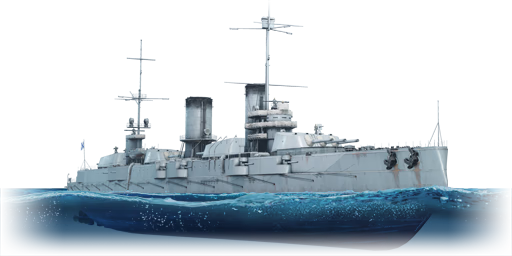The Poltava was the second ship of the Gangut-class dreadnoughts built for the Imperial Russian Navy in the early 1910s as Russia's first dreadnoughts. She was laid down on 16th June 1909 and commissioned on 30th December 1914. She was tasked with defending the Gulf of Finland from the Germans, but they never attacked so she conducted training missions and covered minelaying ships. Due to the lack of crew in 1918, she was laid up and suffered heavy damage from a fire the following year. She was a parts source for her sister ships and no repair was ever carried out on her. She was struck from the Navy List in 1940 and in late 1941 she was grounded to prevent her sinking by the Germans. Her wreck was refloated in 1944 and subsequently scrapped in 1949.
Poltava was introduced in Update "New Power". The Poltava is very similar to the Imperatritsa Mariya, as the latter was a development of the Gangut class. The Poltava features less armour compared to Mariya, with turrets being up to 203 mm thick and barbettes up to 150 mm instead of 250 mm thick armour found on Mariya. The ship is armed with four triple 305 mm guns distributed along the length of the ship. The guns fire either HE, APHEBC, or SAP shells. The SAP shells are one of the best in their class with 55.2 kg TNTeq and up to 223 mm penetration on 10 km range, allowing for destroying or heavily damaging heavy cruisers or even lighter armoured battleships with a single salvo.















